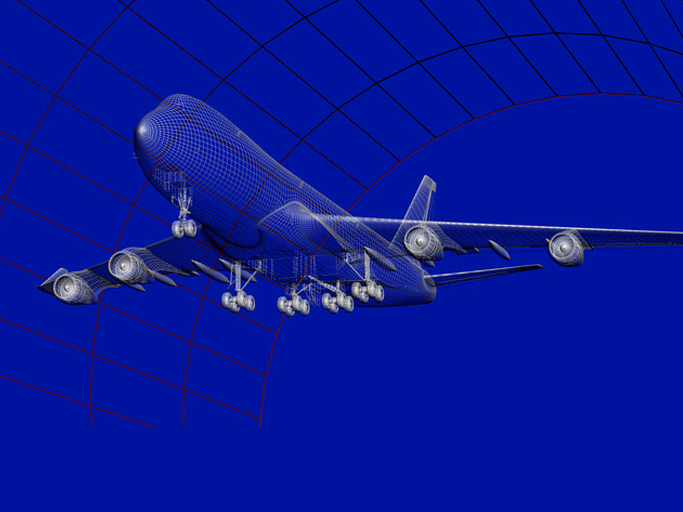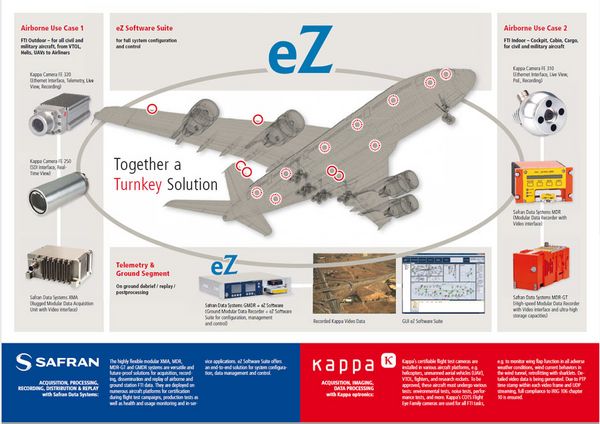Test aircraft: fully loaded with test instruments
Test flight aircraft are equipped beyond the normal model version with test equipment. Among these are sensors of all kinds, data recording devices, telemetry equipment and many more. They should provide verification of the performance of various system components and of flight safety. But further development of aircraft or of individual systems, the definition of simulation data, the examination of incidents and the calibration of systems also belong to the spectrum of tasks of the flight test instrumentation (FTI) as well. The pilots, too, fall under complex test pilot licensing requirements.
Kappa entered the sector via its relationships with aircraft manufacturers.
Here, cameras with Kappa’s typical “Rugged Quality” and their remarkable disruption resistance in the face of any environmental conditions (cold, pressure, etc.) score high marks for their higher-than-average image performance with latency-free images. In the area of flight test instrumentation, collaboration occurs in cooperation with specialists in data recording as well as directly with Tier 1 aircraft manufacturers.
Since 2004: Long-standing experience in the area of FTI.
Kappa’s flight test cameras have been in use, both inside and outside aircraft, since 2004. They are installed in aircrafts, helicopters and unmanned aerial vehicles (UAV). To be approved, these aircraft must undergo various tests: environmental tests, noise tests, performance tests, and more. Cameras are used, for example, to monitor wing flap function in all adverse weather conditions, or when retrofi tting with sharklets, to monitor wind current behaviors in the wind tunnel. The cameras are technically first-rate; with Ethernet interface and real-time image compression inside the camera, they deliver streams for telemetric applications as well as data for onboard recording.
Kappa Flight Eye: A specific portfolio of flight test cameras for all flight test applications.
Developing the Flight Eye portfolio new standards were set. Instrument protections against overheating and crash safety (ED 112, ED 155) were the next development goals. Cameras’ dimensions were further reduced, making them simpler and more versatile in their integration into flight vehicles. One important aspect in all developments is system compatibility. All flight test data are recorded or transmitted. Interfaces and data volume are aligned with recording capacities. The tendency to condense components more and more in the future into one system or one sensor is clear. In the area of telemetry, new qualities are expected as well. For all of these developments, Kappa sees itself well positioned as a technology supplier that thrives on innovation.










![[English] [English]](/fileadmin/user_upload/Pascal_Greinke_2023.jpg)

